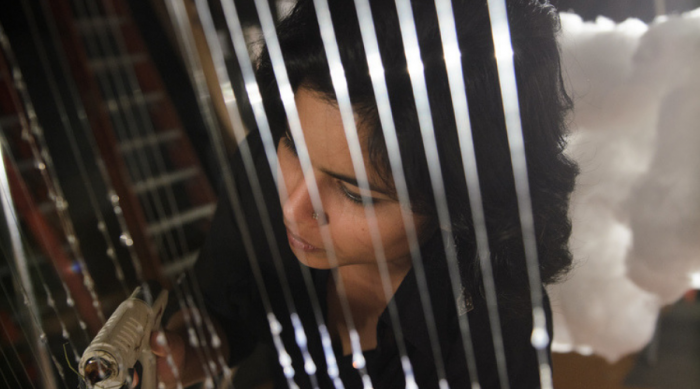In the past few years some important, more pronounced conversations have developed around diversity in Hollywood. Come the annual awards season, social media is abuzz with criticism and protest at the fact that the demographics of people working in Hollywood have not changed for decades. #HollywoodSoWhite is real.
A recent report by UCLA’s Ralph J. Bunche Center for African American Studies found that women and minorities remain underrepresented “in every arena.” The issue doesn’t only extend to the characters we see portrayed on screen, but those working behind the camera too.
So it’s refreshing to discover the work of Indian art director and production designer Aashrita Kamath, who is making her mark in the industry while being a woman and a minority.
Her love affair with film began in high school where she joined the film club, which gave her the opportunity to explore film from all parts of the world. While she went on to study sociology, Kamath continued to nurture her creativity as part of her college’s Fine Arts Exhibit, where she got a feel for putting spaces together to tell a story.
It wasn’t until an internship at an ad film production company that she grasped the extent of the work and collaboration that goes into creating a piece of film. What most inspired her was way all the smaller parts came together to contribute a new visual world.
Being exposed to various elements of the production process, she was most attracted to the art department for the way those props and sets they create have such a power over the unfolding of the narrative.
Soon she’d cut her teeth in the Bollywood feature film industry with work on West is West and Zindagi Na Milegi Dobara. She enjoyed learning on the job and these experiences would be vital for the rest of her career trajectory, but they also inspired her to formally study the craft. And she did that in no small way, being one of only twelve fellows accepted into the American Film Institute (AFI) Conservatory’s Production Design course.
A couple of nominations and awards later, and she’s now worked on the sets of Hollywood blockbusters like The BFG, Kong: Skull Island, Interstate, Avatar 2 and 3 and Pacific Rim Uprising.
She says the work is all the more rewarding for its reliance on collaboration and teamwork: “The nature of filmmaking is of a collaborative process and a team effort!” She goes on to share that the role extends to so many facets of the creative process.
“As a Production Designer, you are a part of the Director’s core creative team and it’s our responsibility to give their vision a tangible, physical shape and form; to create the overall look for a film; and one that illustrates the setting and visual style of the story. This includes the design of the sets, selection of locations and the supervision over any physical objects that will define the look of the film.”
Among the challenges she faces she cites the not-so-subtle task of connecting and transporting audiences just by way of the world in which the characters exist. "I reckon it’s one of those challenges that really evoke the magic in the job," she says.
She also acknowledges the importance of supporting her director’s vision at all time. “Every director is different and has a different style. Part of the challenge is to be malleable and provide them with the support and ideas to take their vision further.”
One gets the sense that a big part of Kamath’s success is her openness to learning and extending the bounds of what she does. She shares her winning formula: “I’m constantly learning and being challenged with every project that I’m a part of. But that’s what keeps me going and keeps the excitement levels up.”
This story was adapted from an interview by Rohini Kerjiwal.










